QuestionMy 12 year old American Eskimo had these little growths that he would get in random places. One was a pink lump on his leg that we had removed and the vet said it was nothing just a benign growth. Then it grew back. He has two other very small ones also. Now he has a fairly large lump on his back between his shoulders and it is bleeding. I bleeds and forms a scabby mess on his back. It smells really bad as well. He can't reach it on his back so I am pretty sure that it is just bleeding on its own. However, I haven't noticed any change in appetite or any unusual sluggishness either. So I am not sure what to do. He is an old dog and is overweight a little so he for awhile not really done too much. But I am just not sure what it is or what to do. Thank you.
Answer
Hi Sara,
Older dogs are prone to develop lumps and bumps, and many times when a growth is removed it will grow back. That's not unusual. Because the large growth on your dog's back seems to be a different kind of growth; that it's larger, has a smell, and bleeds, that's reason enough to have your vet look at it.
It may be nothing or it could be something of concern, there's no way to guess about what a growth may be, your vet may want to biopsy it . The growth may need nothing more than to be drained, and that can be done without putting your dog under anesthesia (it's called a fine needle aspiration).
I know there is a kind of growth that has a foul odor. Epidermal cysts are common non-cancerous (benign) sac like cavities filled with a foul-smelling cheesy material composed with sebum (oily material secreted by sebaceous glands) and epithelial debris. They often develop along the back but are also found on the extremities. The cyst may become secondarily infected. Partial hair loss may be seen on the skin overlying the cyst. Epidermoid cysts grow slowly and usually do not cause symptoms, but they may become inflamed or secondarily infected, resulting in pain and tenderness.
Don't squeeze the cyst to drain it. That can cause intense inflammation. If an epidermoid cyst is infected, it is first drained and tested for bacterial contamination. If drainage fails to resolve the infection, antibiotics are usually started. An anti-Staphylococcal drug is used if cultures and sensitivities cannot be obtained immediately as this is the most common infecting organism.
If this is the kind of cyst your dog has, it's a comfort knowing that it isn't malignant, but it does require your vet to examine it.
I hope I've been a help.
Best of luck,
Patti

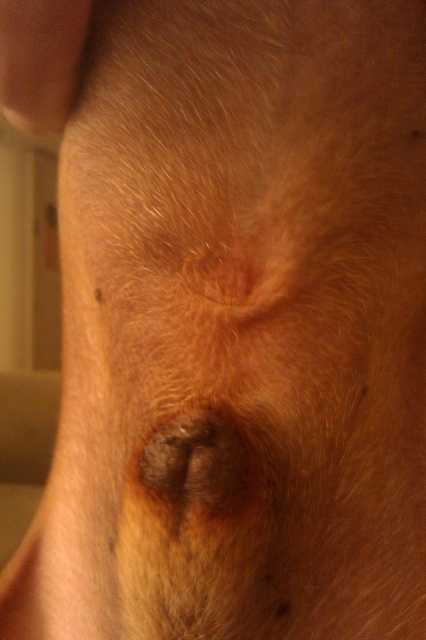 Found Dog
Question
this is what it looks
Hello my is sara and my
Found Dog
Question
this is what it looks
Hello my is sara and my
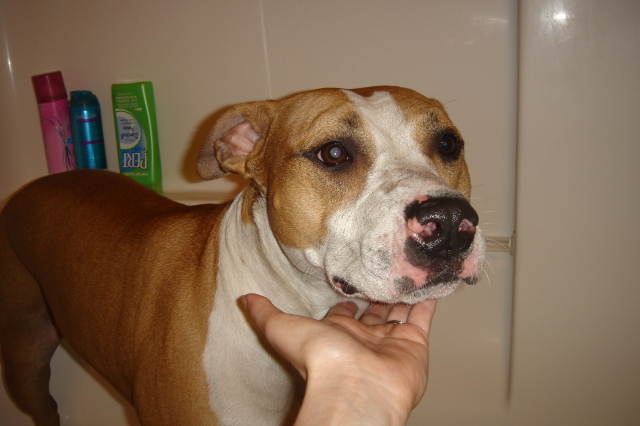 Dog breed?
QuestionQUESTION: Hi Nancy,
I am attaching an image of
Dog breed?
QuestionQUESTION: Hi Nancy,
I am attaching an image of
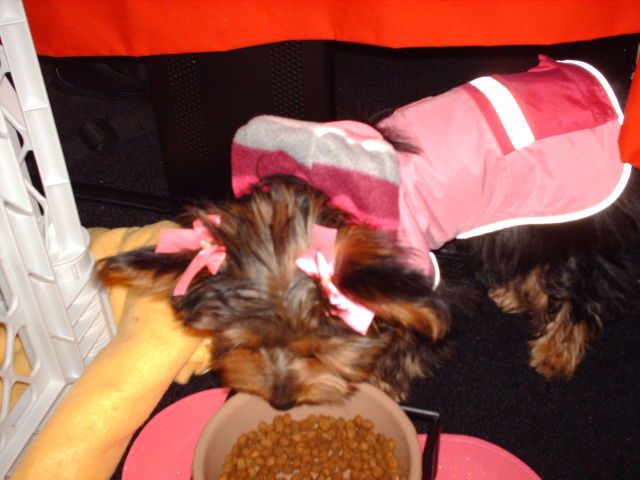 about babygirl my 14 week yorkie
Question
babygirl brooklyn
i do no whats going on with
about babygirl my 14 week yorkie
Question
babygirl brooklyn
i do no whats going on with
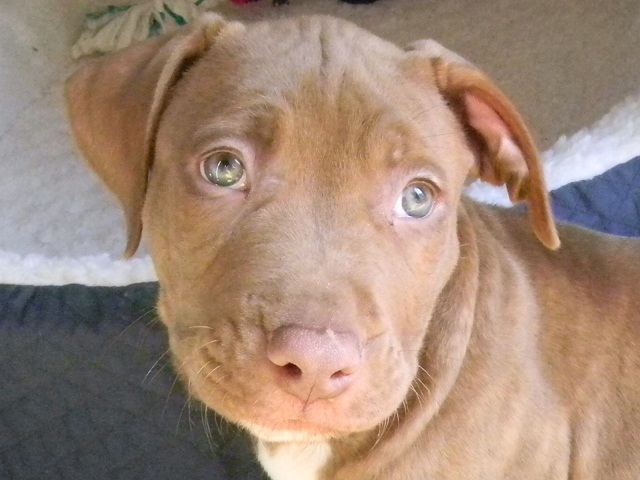 10 week old Pitbull Pup
Question
Ares
I have a few questions =]
Why does he ke
10 week old Pitbull Pup
Question
Ares
I have a few questions =]
Why does he ke
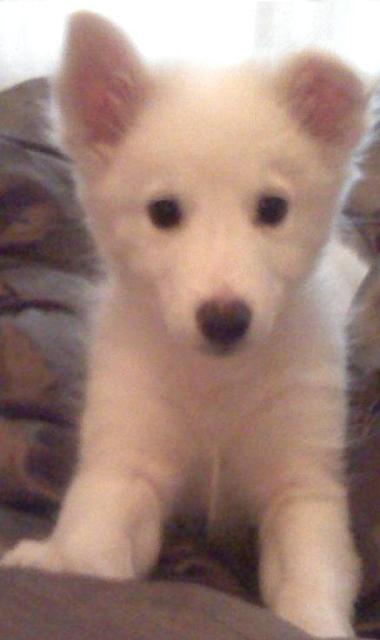 New Eskimo puppy
Question
Honey the shy american
I just got my 10 week o
New Eskimo puppy
Question
Honey the shy american
I just got my 10 week o